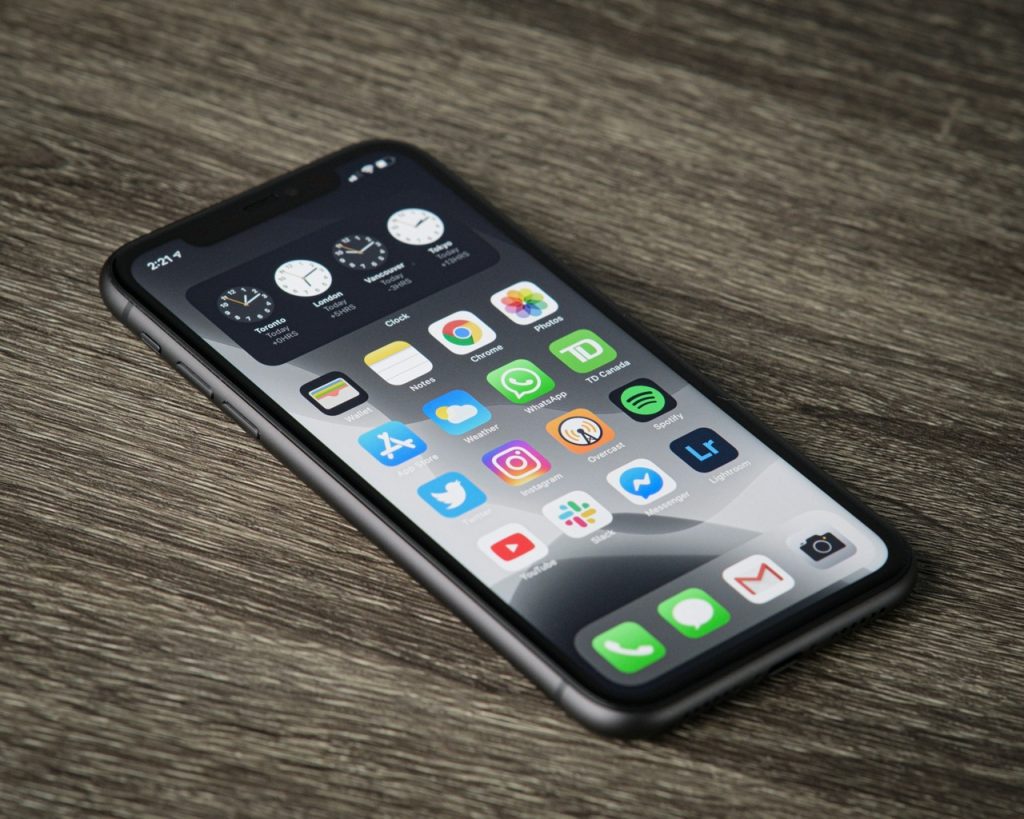Mobile Loyalty Programs have long been a useful tool for companies wishing to retain their customers. But with technology entering our lives, they underwent a makeover and transformed to suit the new consumer. Mobile apps, in this regard, emerged not just as a tool, but as a very pillar of transforming brand and customer relation.
A Brief Overview of Traditional Loyalty Programs
Loyalty programs for years operated on one ideology alone: the more a customer buys, the more he/she earns by way of bonuses. The basic attributes of such programs were:
- Bonus points for each purchase.
- Discount or free product coupons upon reaching a threshold level.
- Members-only exclusive promotions.
Though popular, traditional programs were not without their disadvantages. They managed to make customers recall a multitude of conditions, and not all of them used them to the fullest of their capabilities.

The part played by mobile technologies in transforming customer loyalty
With mobile technologies, businesses had new possibilities to interact with customers more effectively. Mobile applications not only made it easier to use Mobile Loyalty Programs, but also introduced new functionality that makes them more interesting and attractive.
- Convenience: Customers have all their score and promotion information with them wherever and whenever they need it using the application.
- Personalization: Mobile applications can use algorithms to provide customers with personalized offers based on their interests and behavior.
- Interactivity: The ability to play the game provides a higher degree of interactivity, which translates to greater commitment.
Thus, the establishment of Mobile Loyalty Programs through mobile applications has become not only a trend but also a necessity for companies who want to thrive in the present market condition. Next, we will analyze why mobile apps became the chief instrument of this development and what advantages they offer to companies for the sake of customer engagement enhancement together with Celadonsoft. Learn how our Cloud-Based solutions prepare you for 5G challenges.
Why mobile apps?
The potential of mobile technology over customer rewards schemes cannot be exaggerated. In the ongoing era of electronic developments, with availability and access speed as the game name, mobile apps will become a critical business platform. Reflect on why mobile solutions are leading the restructuring of reward schemes.
Benefits of mobile systems in customer loyalty
- Accessibility anytime and anywhere: With mobile applications, the customers do not have to hunt for information on the loyalty program; they are able to view their rewards points and offers at any time and any place that they want. This enhances their level of involvement by a long way.
- Simple interface: Contemporary apps are designed to accommodate customers and provide easy interaction. This enables one to access the correct information and benefit from the offers quickly, which is optimal for customer satisfaction.
- Process optimization: It is convenient to join the loyalty program using mobile apps. For example, when you receive points, it is not required to fill lengthy questionnaires but instead scan the QR code or enter a telephone number.
Some statistics on usage of mobile applications in the loyalty and shopping sector:
As for studies, more than 80% of the users of smartphones use mobile applications for shopping fairly often. It confirms:
- Improve convenience: With apps, customers can compare prices with ease, read reviews and receive special offers.
- Higher involvement: The rate of repeat buying among mobile app consumers is higher than among individuals who use web sites alone.
Furthermore, as the statistics indicate, mobile app owners have a much higher chance of retaining customers through active engagement and personal touch, extending loyalty.
Conclusion
Thus, mobile applications become not only a comfortable tool for consumers, but also a helpful tool for companies like Celadonsoft. It should be marked that using solutions for Mobile Loyalty Programs is not just a trend, but an imperative for those companies that should remain in the market. New business models need to think not just about the existing technology environment but also changing customer demands, hence countries for digital engagement are as relevant as ever.
Key features of mobile loyalty apps
With the rapid progression of things in the technology arena and increased competition in the marketplace, it is highly crucial that loyalty schemes retain their customers as well as attract new ones. Mobile applications are a great facility in this case, with a majority of its features being well suited to address the needs of the contemporary user. Let us consider the most important features that make mobile apps an effective weapon for loyalty schemes:
Personalization of offers and activities
Mobile applications provide the feature of capturing and processing customer preference data. Based on this information, personalized offers may be generated based on the user’s interest and needs. For example, the app may provide a discount on the most liked product based on the past purchases.
Interactive elements
To render the loyalty program more interactive for customers, mobile applications employ different interactive elements. They can be:
- Games and Cheeky: Providing customers with the ability to earn points by playing mini-games or by completing tasks adds to the gaming experience.
- Active rewards: Customers can be rewarded more for regular purchase or referral of new customers.
Easy access to information
Mobile applications make it much easier for customers to get information on accrued points, in terms of promotions and Mobile Loyalty Programs:
- Balance display: Customers can see their balance and accrual history at any time.
- Deadline reminders: Expiration deadlines for unused promotions or bonuses keep customers engaged.
Integration with other channels
Mobile apps are typically integrated with other customer touchpoint channels, such as social networks and email, to allow brands to mirror behavior across channels and reach more people.
Social features
Addition of social activity opportunities, such as encouragement for achievement in a loyalty scheme or referral scheme, assists in growth and participation through a client base.
Utilization of the aforementioned capabilities through mobile apps not only improves the experience of customers but also assists in growing the brand-buyer connection. Effective loyalty programs are becoming accessible and exciting, and this ultimately leads to greater loyalty and sales.
Creating a unique user experience
Mobile apps for loyalty programs today need to offer the user not just functionality, but a cohesive user experience. The most significant things to remember are:
- Visual appeal: Appearance of the application does play an important role in perception. It will raise user interest significantly if there is use of vibrant colors, easily readable icons and crisp printing. The appearance of the interface needs to be transformed to provide a cozy visual experience that will cause users to return to the application.
- Easy-to-use interface: Easy-to-use navigation is another core feature. By the adoption of easy and clean menus, it will be easy for the user to navigate to the appropriate sections, either history of points gained, existing promotions or regarding forthcoming events. Easy and friendly are the constituents of a winning app.
- Reminders and notifications: Accurate notifications have immense power in user engagement. Completion statistics, point reminders, customized offers, or some other information may be a plug-and-play customer-retention tool. Ensure the reminders are not interrupting other activities by checking their frequency and readability -.
Data analysis and feedback
Another significant advantage of utilizing mobile applications for loyalty programs is that one can collect and analyze customer data. Not only does this allow one to have a better understanding of the viewership, but also allows one to improve the service offered. Some of the significant areas that need to be considered:
- Data gathering: The activities of users on mobile applications may be monitored to gather data pertaining to their habits and interests. With the assistance of analysis software, the companies can determine trends when it comes to purchasing habits, learn more about the products or services that intrigue them the most.
- Feedback analysis: User feedback not only contributes to improving the application’s functionality, but also to modifying the loyalty program in accordance with the needs of customers. The surveys carried out on a regular basis and the option to post a review on the app make «two-way communication», increasing the level of confidence in the brand.
- CRM system integration: Companies like Celadonsoft will be able to understand customer engagement with the brand more effectively through integrating data from the mobile application and CRM systems. This not only boosts the efficiency of marketing campaigns, but also makes it more responsive to changing consumer trends.
Introduction of data analysis techniques and anticipatory work with feedback is the key recipe for successful business transformation of loyalty programs via mobile apps, thus guaranteeing prerequisites for long-term business growth.
The future of mobile apps in loyalty programs
Each year, mobile apps increasingly form part of the management of loyalty programs. Let’s summarize some of the significant trends and forecasts for the coming years:
Integration of artificial intelligence (AI)
AI will more and more redefine the way it interacts with customers. Machine learning algorithms will be able to learn about consumers and offer personalized recommendations. This will create a more intimate connection between brands and consumers.
Blockchain for transparency
Blockchain technology is now increasingly coming into the forefront of maintaining customer trust intact. Businesses will be able to make absolute transparency in use transactions and scoring possible with this technology. Customers can monitor their transactions and be sure of their security.
Micro-increase in loyalty
Micro-interaction-centered loyalty programs are becoming popular. Customers will be rewarded by companies for large transactions, as well as for small actions such as reviews or recommendations. This will create an infinite loyalty.
Interactive elements and gamification
Gamesmanship within loyalty programs will take off. As clients search for dynamic and engaging ways to interact with companies like Celadonsoft, adopting game mechanics such as achievement stages, challenges and awards into practices will become standard practice.

Conclusion: Brands that have already gone one step ahead
While the other restaurant are only now starting to include mobile apps in their loyalty programs, there are already quite a number of successful examples that show that this can be achieved successfully:
- Starbucks: The Starbucks mobile app not only allows customers to order and pay for coffee, but also earn points, join offers on targeted promotions. This strategy has fueled engagement and loyalty.
- Sephora: Sephora’s Beauty Insider program utilizes the aspects of Gamification and Personalization. Consumers earn rewards not only by shopping but also by interacting with the app, which is used to create a personalized user experience.
- Nike: Not only can consumers track their exercises using the Nike Plus application but also participate in a chain of challenges to receive rewards upon completion of achievements. This assists in creating a community for the company and strengthens the bond with customers.
The future of loyalty programs is taking shape with the arrival of technology. The businesses have to be watchful of new innovation and embrace mobile applications as prominent drivers to pull loyal customers in and achieve market competitiveness.


